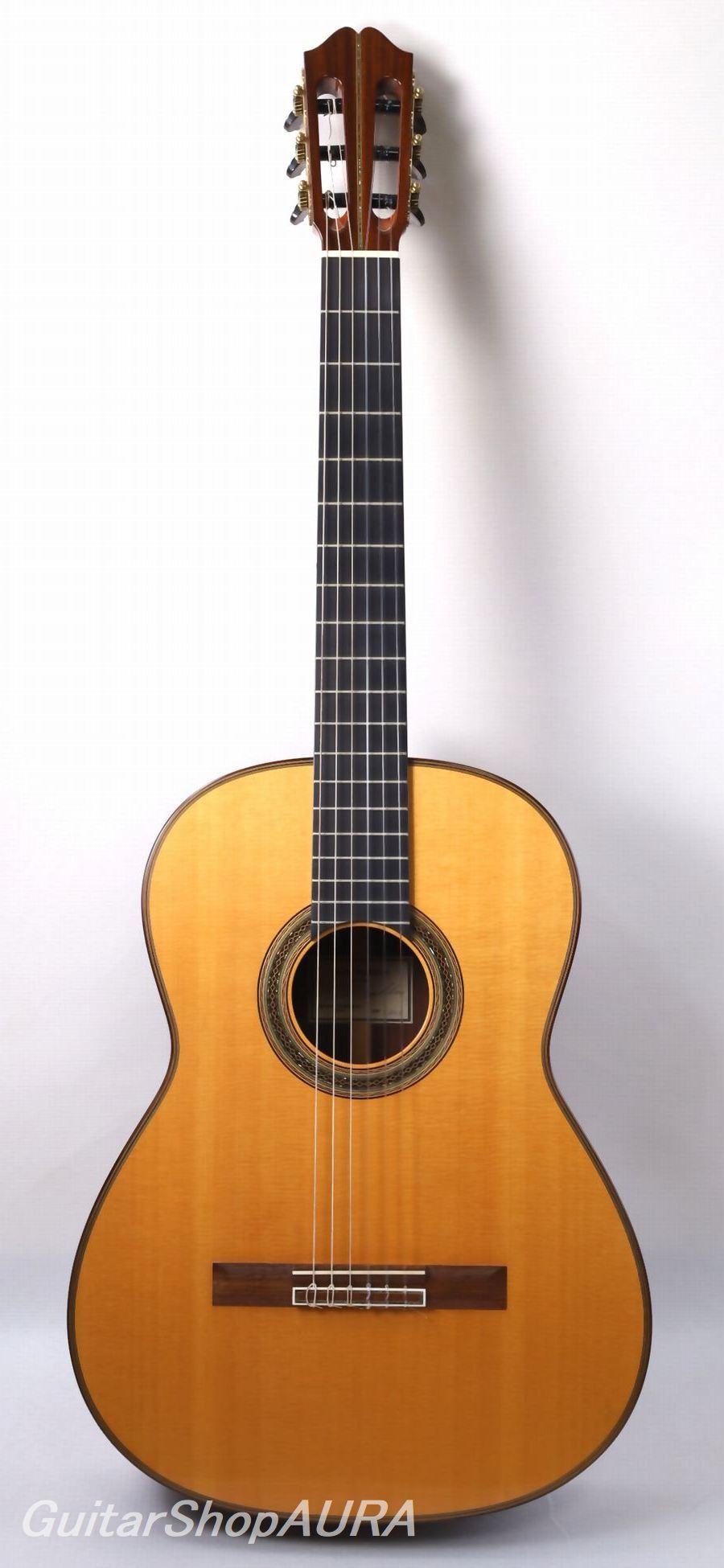
| Instrument | Eric Sahlin |
| Category | Imported Classical Guitars 〔Used〕 |
| Number/Model | No.268 |
| Scale length | 650mm |
| Country | U.S.A |
| Year | 2005Year |
| Top | Solid Spruce |
| Side&Back | Solid Indian Rosewood |
| Condition※ | 7 |
| List price | INQUIRE |
| Price (tax included) | Please Inquire |
| option | With Hardcase |
Click to enlarge the photos below
Neck:Mahogany
Fingerboard:Ebony
Finish:Lacquer
Tuning Machine:RODGERS
String height:1string 2.5mm/6string 3.6mm
【Profile】
Born in 1956 in Spokane, Washington, this American luthier developed a strong interest in both woodworking and classical guitar from a young age. Pursuing both passions in parallel, he studied fine arts and sculpture at the University of Washington, followed by acoustics and physics at the University of California. During his academic years, he began collecting guitar-making manuals and, in 1975, completed his very first guitar entirely self-taught.
After graduating, he founded a workshop in 1977 focused on furniture and instrument making. However, within a few years, his attention shifted exclusively to guitar building, and his instruments began gaining wider distribution. Encouraged by a lute-player friend, he briefly explored lute and acoustic guitar construction in the early 1980s. But by 1984, he dedicated himself fully to the making of classical and flamenco guitars, a focus he continues to this day from his workshop in Spokane.
By the late 1980s, his reputation had firmly taken root, and he is now regarded as one of the leading American classical guitar luthiers of the modern era. Known for his exceptional woodworking precision, flawless finishes reminiscent of fine furniture, and player-centered design approach, his guitars are celebrated for their beauty, playability, and inventive character.
His instruments have been favored by numerous professional guitarists, including members of the world-renowned Los Angeles Guitar Quartet, such as Scott Tennant and Andrew York, further cementing his legacy as a master craftsman of the classical guitar world.
【Description】
This is a 2005 Eric Sahlin classical guitar, No. 268, a used instrument built during the middle period of Sahlin’s career—widely regarded as one of the finest luthiers in the United States. Even nearly two decades after its construction, this guitar stands out for its uncompromising clarity and refinement, a testament to Sahlin’s design philosophy and tonal vision, as well as his exceptional craftsmanship.
The instrument produces a remarkably clear, radiant tone with a refined brilliance and precision across the entire range. It offers a sensation of taut yet responsive pluck, yielding an articulate, vibrant voice. Each note is balanced and pure, with no muddiness or tonal drift, and the density and projection remain consistent across dynamics. One could describe this as an American interpretation of Hermann Hauser’s legacy—where Hauser integrated Spanish lyricism into pianistic clarity, Sahlin instead redirects that classical ideal back toward the intrinsic nature of the guitar as a purely functional, expressive tool, stripped of extraneous stylistic or historical associations.
The guitar’s defining strength is its pristine clarity—not only in single tones but in the way each constituent note in a chord maintains its identity. This lends it exceptional transparency in polyphonic music, where each voice projects with equal presence. The instrument excels at subtle tonal shading, dynamic control (from ppp to fff without tonal collapse), and precise responsiveness to the player’s intention. Rather than producing its sound 'automatically,' the guitar is remarkably linear in its response: the tone feels as if it is drawn directly from the player’s fingertips. Every nuance of contact, every variation in touch is translated with stunning resolution, making the instrument demanding but deeply rewarding for skilled players.
The bracing pattern reflects a classic Hauser-style layout. It features one harmonic bar above and one below the soundhole, with additional small reinforcing plates on either side of the soundhole. Seven symmetrical fan braces are arranged beneath the top, with their ends anchored by two V-shaped closing bars at the lower bout. A thin bridge plate is positioned directly beneath the bridge area. Each fan brace is delicately carved, about 3 mm wide and up to 3 mm high at the center, tapering outwards until they blend almost seamlessly with the soundboard near the edges—a hallmark of Sahlin's precision. The body resonance is tuned slightly above G.
There are no cracks, structural modifications, or major repairs. Cosmetic wear includes playing marks around the edges of the fingerboard, under the strings near the soundhole, and below the bridge, along with a few minor dings near the bottom of the soundboard. These are all minor and do not detract from the overall visual impression. The back and sides show only faint signs of contact wear, and the neck remains very clean, making this a well-preserved example given its age.
The neck features Sahlin’s signature ergonomic twist—a subtle difference in neck angle between the treble and bass sides at the heel—engineered to reduce wrist strain during performance. This complex and highly skilled construction enhances playing comfort without compromising stability. The neck has a slightly flattened D-shape with a compact, comfortable grip.
The instrument is in excellent playing condition. String height is currently set at 2.5 mm (1st string) and 3.6 mm (6th string) at the 12th fret, with 0.5–1.0 mm of saddle height remaining.